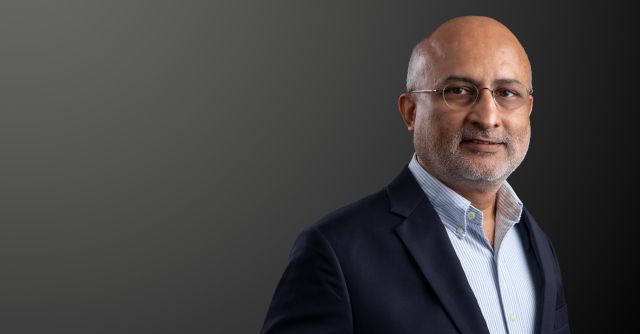
Lentra strengthens tech backbone for banks, plans analytics push by Dec: CEO


India’s lending landscape is at an inflection point. Demand for credit continues to surge across retail, MSME and first-time borrowers, yet many traditional lenders remain shackled by legacy technology, fragmented processes and costly manual decision-making. Against this backdrop, Pune-based fintech SaaS player Lentra has carved out a niche as the “invisible engine” behind banks, Non-Banking Financial Companies (NBFCs) and housing finance companies with a mission to make lending decisions faster, safer and more intelligent.
“We are not a lender, and we will never lend,” emphasises D. Venkatesh ( or DV as he is popularly called by friends and colleagues), CEO and co-founder of Lentra. “Our job is to build the tools that help banks lend better. Lending is their business; technology is ours,” he said in an exclusive interview with TechCircle.
Venkatesh, a veteran technologist with over 36 years of experience, co-founded Softcell Technologies in 1989 and later steered its software business into a separate entity. Lentra was incorporated in July 2018 following a demerger approved by the National Company Law Tribunal in 2019. Since then, it has emerged as a leading software-as-a-service (SaaS) platform for regulated lenders, offering solutions across borrower identity verification, credit decisioning and data aggregation.

Today, Lentra has a 690-member workforce, of which close to 97% are technical resources, underscoring the company’s DNA as a product-first engineering organisation.
Identity at the core
Venkatesh’s starting point was a problem that haunts lenders worldwide—identity fraud. In India, he notes, “nearly 90% of frauds happen by hijacking someone else’s identity. An imposter uses your credentials to take a loan, and the real person faces the consequences.”
To tackle this, Lentra built a triangulation engine that digitally matches a borrower’s Aadhaar profile with officially valid documents—PAN, voter ID, driver’s licence, property records and even tax receipts. “Identity verification is about 20% of the entire credit process. If you get that right, you slash risk at the source,” he says.

Beyond identity, the platform pulls authorised data from outside the bank—from credit bureaus, account aggregators and tax repositories—to assess a borrower’s repayment capacity and probability of default. Lentra integrates with all four credit information companies to ingest credit reports, combines that with 24 months of income and spend data via Reserve Bank of India’s (RBI’s) account aggregator framework, and generates its own custom score.
The result – banks using Lentra achieve over 96% straight-through processing (STP). “Only four out of 100 applications go to a human underwriter,” Venkatesh notes. “That’s how you cut customer acquisition costs and reduce turnaround time.”
Not a digital lender, but a digital enabler
While fintech apps have popularised “digital lending” in India, Venkatesh draws a sharp distinction between Lentra and the new-age NBFCs offering instant loans. “We don’t participate in that model. These are lenders with faceless apps. Our focus is on traditional banks and helping them digitise processes, reduce NPAs and make more informed decisions.”

The company already counts Federal Bank, Aditya Birla Capital, SBFC, TVS Credit and Poonawalla Fincorp among its clients. These institutions use Lentra’s tools to speed up retail lending, curb delinquencies, and improve customer onboarding. A senior executive at one of these lenders told TechCircle that Lentra “has helped us shrink turnaround time from days to hours, while keeping fraud risks firmly in check.”
AI as a productivity booster
Artificial intelligence (AI), according to Venkatesh, plays a “silent but powerful” role in the back-end. “AI has two big contributions—crashing timelines and improving accuracy,” he says.
Optical Character Recognition (OCR) engines powered by computer vision now extract data from PAN cards or pay slips with 95% accuracy. Coding itself has become faster, with AI tools flagging vulnerabilities and suggesting better methods in real-time. “This has reduced headcount in some areas but raised productivity and morale. It’s like moving from a stone grinder to a blender,” he informs.
Yet Venkatesh stresses that Lentra keeps humans “in the loop” for borderline cases and underwrites only where AI is confident. “AI is a tool, not a replacement”.
Security-first by design

Building for banks meant addressing their biggest fear: security. Lentra is hosted on AWS, with options for GCP and Azure. Data residency is entirely in India as mandated by the RBI.
The company boasts a long list of certifications—from ISO’s ISMS to SOC 1-3, NIST and privacy extensions—audited by global firms DNV and TÜV and implemented by Grant Thornton. Customers are encouraged to bring their own encryption keys.
“Even our staff can’t access the data without three out of five approvals,” Venkatesh explains. “We benchmark ourselves to Basel security norms and stay ahead of evolving RBI guidelines.”
Next frontiers: analytics and adjacencies

Having mastered data aggregation and decisioning, Lentra is now preparing to launch an analytics-as-a-service solution by December. While the specifics remain under wraps, Venkatesh hints that the tool will provide CFOs, risk officers, and underwriters with unprecedented insights into portfolio performance and non-performing assets.
This move will complement Lentra’s existing decisioning engine by enabling banks to predict default probabilities more accurately and take pre-emptive action. “The mantra of retail lending worldwide is the probability of default,” says Venkatesh. “We’re giving banks the tools to predict the shape of the future.”
Lentra also plans to expand through acquisitions and adjacent offerings. Hiring remains opportunistic. “If we see exceptional talent, we hire first and fit later,” he says.
As India’s credit market deepens and regulatory scrutiny tightens, Lentra is positioning itself as the trusted technology backbone for lenders. “We’re an open platform,” Venkatesh concludes. “We reveal our models to banks so they can improve them. That builds confidence. Over time, we aim to be the dominant player in this segment.”

